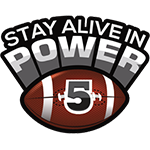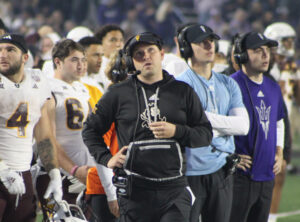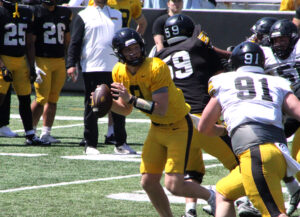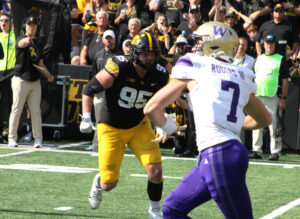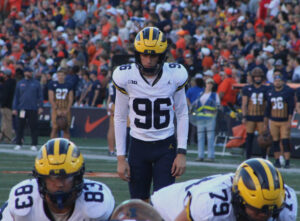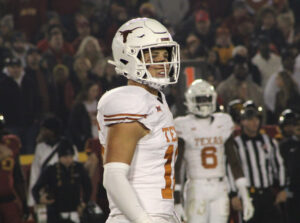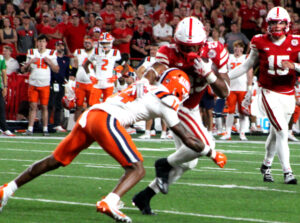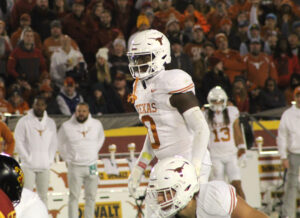Why it’s beneficial for underclassmen to remain in school
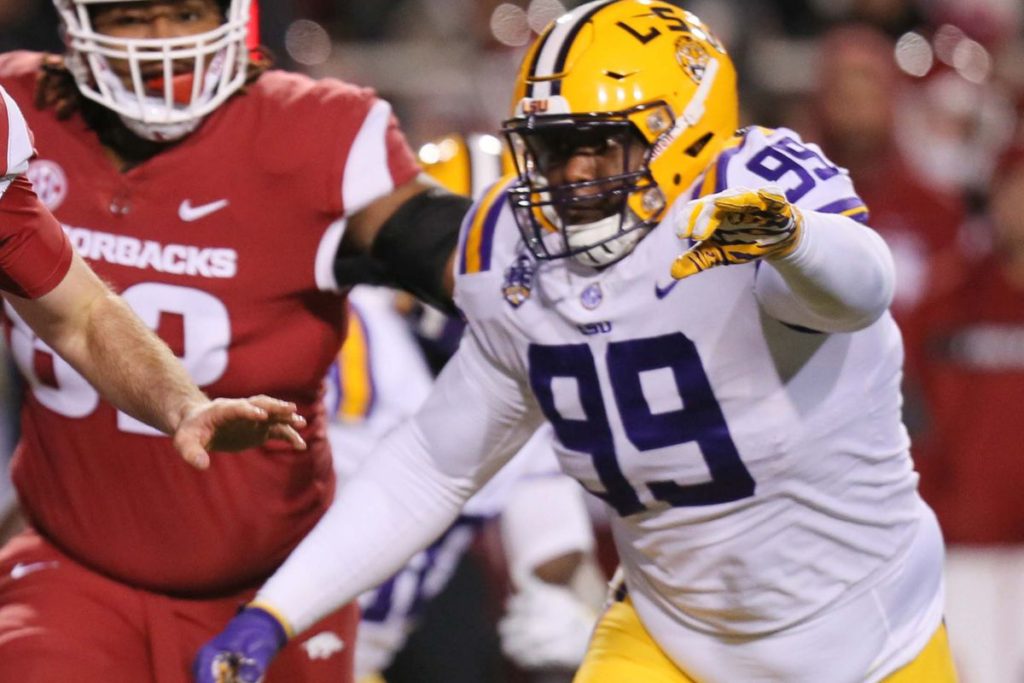
LSU's defensive tackle Ed Alexander moves in for the tackle, Nelson Chenault-USA TODAY Sports
Every year at the end of the regular season underclassmen forego their remaining eligibility and declare their intention on entering the NFL Draft early.
It even became trendy for a player to sit out and not participate in bowl games by choice instead of playing alongside their teammates. It’s a thin line between betrayal and doing what’s best for the individual, but coaches understand that each situation varies from player to player. As long as the underclassmen are three years removed from high school they’re eligible for the next level.
Nearly every player wants to fulfill their childhood dream of making it to the NFL. Not to mention financial stability is always a motivating factor. Other underclassmen student athletes try to strike while the skillet is hot and ride the wave of momentum after having a productive season. However, nothing is for certain and often times these players put their eggs into one basket not truly understanding the uncertainty behind this lifetime decision.
It’s not like the NBA Draft, where underclassmen are allowed to withdraw their names by late May if no agent has been hired. When it comes to the NFL Draft, players basically forfeit their eligibility and can’t renege. Several players found that out the hard way in this year’s draft. Out of the 144 underclassmen that originally committed, 49 of them didn’t get drafted, including 26 from Power Five Conferences.
Did the NFL send a message for all the underclassmen to stay an additional season in college to hone in on their skill set? There has been complaints from NFL General Managers and Head Coaches about players coming into the league physically and mentally unprepared. Regardless of how it was perceived the league made a statement. If players aren’t sure they’ll go in the first three rounds than maybe it’s better for them to play another year at the collegiate ranks and improve their stock.
There are other alternatives if a student-athlete wants to stay put, but play for a different team. As graduate transfers student-athletes can now enroll in another program and be eligible to play immediately. Still, the lure of money and all that NFL glory is what drives these underclassmen.
Players who are invited to the combine know there’s a huge emphasis on the bench press and 40-yard dash and the NFL wants to know how strong and fast you are. Having bad results in those drills can plummet a player’s stock. Which is why it doesn’t hurt for underclassmen to stay put and use an extra year to get faster, stronger and earn a degree. Student athletes need to focus on their futures because pro football careers don’t last forever. Still, at the end of the day it’s about the money even if you’re not projected to go in the early rounds.
These notable underclassmen from Power Five Conferences had hopes of hearing their names called over draft day weekend, but were humbled and had to take the free agency route to the NFL. Time will tell if this all had an effect on how players will approach this upcoming season and the decisions they’ll make towards the end of the year.
Antoine Wesley, WR, Texas Tech: He earned All Big 12 second team honors. His 88 catches led Big 12 for 1,410 yards and nine touchdowns. However, he benched 225 pounds just six times and didn’t run the 40-yard dash at the NFL Combine, two vital areas of performance and received a 5.41 draft grade. Texas Tech wide receivers are hard to figure out because of the system they play. However, wideouts such as Michael Crabtree, Danny Amendola and Wes Welker have had success in the NFL. Wesley could’ve came back for his senior year and worked on his strength and speed.
Alex Barnes, RB, Kansas State: The redshirt junior led the Big 12 in rushing with 1,355 yards, had 12 rushing scores and earned second team All Conference honors. However, his 4.59 40-yard dash time and 5.39 Draft Grade meant he only had the potential of becoming a backup and probably scared off some NFL General Managers. Another year in school would’ve definitely improved Barnes’ skills, but he would’ve had to adjust to a new playbook and scheme under the new regime of Chris Kleiman.
Ed Alexander, DT, LSU: He played in 11 games last season and started six, but sat out LSU’s game against Central Florida in the Fiesta Bowl and declared for the draft. Alexander’s numbers were average, 28 total tackles, including three for loss and one sack. The junior didn’t participate in drills at the Combine and received a Draft Grade of 4.96, meaning he would struggle to make it into training camp. Had Alexander played another year in College Football’s toughest division he could’ve improved his intangibles and draft stock. He’s pretty much the poster boy for why underclassmen sitting out bowl games and foregoing their senior year can come back to haunt them
Tre Lamar, LB, Clemson: He started every game he played in and finished second on the team in tackles with 85, including 5.5 for loss and three sacks. However Lamar didn’t participate in any drills at the Combine and received a 5.10 Draft Grade. Clemson had a star-studded front seven and Lamar decided to ride the wave with his teammates to the NFL instead of returning for his senior year where he would’ve been the leader of the Tigers’ defense.
Saivon Smith, CB, Alabama: He had 60 tackles, three interceptions and broke up five passes for the Crimson Tide. Still, it wasn’t enough to get Smith drafted. He benched 225 pounds 11 times, had a 33-inch vertical and didn’t run the 40-yard dash at the Combine, which is crucial for a defensive back. Smith received a Draft Grade of 5.40, which meant his ceiling was making the roster as a backup or a participant on special teams.
James Williams, RB, Washington State: He led the Cougars in receptions, with 83 and had four receiving touchdowns. Williams rushed for 560 yards and averaged 4.6 per carry in Mike Leach’s Air Raid system, but had 12 touchdowns on the ground. He ran a 4.58 40-yard dash and received a low Draft Grade of 4.99. Had Williams stayed for his senior year he could’ve worked on his speed and leg strength instead of relying more on his hands.
Joe Giles-Harris, LB, Duke: He led the Blue Devils in tackles with 81, including seven for loss and had a sack, despite only playing in nine games. At six-foot-two and weighing 234 pounds, Giles-Harris ran a 4.75 40-yard dash, bench pressed 225 pounds 17 times and had a 29.5-inch vertical. His low Draft Grade of 4.99 means another year of College Football would’ve done Giles-Harris some justice.
Elijah Holyfield, RB, Georgia: Being the son of former Heavyweight Champ Evander Holyfield didn’t help his Draft stock. The junior rushed for 1,018 yards, seven touchdowns and averaged 6.4 yards per rush, despite splitting carries with D’Andre Swift. The red flag was Holyfield’s five catches last season compared to Swift’s 32. Still, he benched 225 pounds 26 times at the Combine. However, Holyfield had a 29.5-inch vertical and ran a 4.78 40-yard dash time, which ranked 22nd out of the 23 running backs at the Combine. Receiving a 5.40 Draft Grade meant another year of College football would’ve helped Holyfield improve on his speed as well as his hands.
Lil Jordan Humphrey, WR, Texas: He had 86 catches for 1,176 yards and nine touchdowns, earning honorable mention All-Big 12. The six-foot-four, 210-pound Humphrey was sort of lanky for a receiver his size. At the Combine he bench pressed 225 pounds 13 times, had a 33.5-inch vertical and ran a 4.75 40-yard dash time, which was the worst among wide receivers. Humphrey’s 5.16 Draft Grade meant scouts seen red flags and thought he would struggle to even make an NFL roster. Had he decided to stick around for his senior year Humphrey could’ve worked on his speed and improved at getting better separation from opposing defensive backs.
Hamp Cheevers, CB, Boston College: He tied for first in the ACC with seven interceptions. Cheevers also broke up seven passes, had 39 tackles and earned first team All-Conference honors. The five-foot-nine, 169-pounder also had a 39-inch vertical. However, Cheevers benched 225 pounds eight times, ran a 4.52 40-yard dash time at the Combine and earned a low 4.99 Draft Grade. The junior probably felt he had nothing to prove returning for his senior year, but another solid season would’ve helped his skill set.
Tyrel Dodson, LB, Texas A&M: He started every game for the Aggies and finished second on the team with 70 tackles, including seven for loss and had an interception last season. Dodson also bench pressed 225 pounds 26 times and ran a 4.6 40-yard dash time at the Combine. He received only a 5.19 Draft Grade and scouts felt he likely wouldn’t have made an NFL roster. Remaining around for his senior season and playing in year two under Jimbo Fisher could’ve helped his Draft stock.
Ryan Pulley, CB, Arkansas: The redshirt junior had 37 tackles, three interceptions and broke up seven passes for the Razorbacks last season. However, Pulley bench pressed 225 pounds 11 times, had a 31-inch vertical, ran a 4.61 40-yard dash time at the Combine and received a Draft Grade of 5.00. Not sure of Pulley’s personal situation, but coming out a year early after an average season seemed like a head-scratcher.
Greg Dortch, WR, Wake Forest: The five-foot-seven receiver led the ACC in all-purpose yardage last season, finished third in the league in receptions and earned first team All-Conference honors. Dortch had 89 catches for 1,078 receiving yards, eight receiving scores, averaged 20 yards per kick return and returned two punts for touchdowns for the Demon Deacons. Still, the redshirt sophomore received a low 4.99 Draft Grade and could’ve used his two remaining years of eligibility to become stronger and faster.
Jakobi Meyers, WR, NC State: The redshirt junior finished second in the ACC in receptions last season with 92 and earned first team All-ACC honors. Meyers was a very productive receiver with 1,047 yards and averaged an ACC-best, 7.7 receptions per game, but only caught four touchdown passes. Meyers displayed great hands and had good size at six-foot-two, 203 pounds. However, he bench pressed 225 pounds 13 times, had a 37-inch vertical, ran a 4.63 40-yard dash time at the Combine and received a 5.00 Draft Grade. Meyers could’ve used his senior season to improve on his speed and touchdown catches.
Kevin Givens, DT, Penn State: The redshirt junior had 33 tackles, including 10.5 for loss in 12 games last season for the Nittany Lions. Givens also had five sacks, including two apiece against Maryland and Kentucky. The six-foot-one, 285-pounder bench pressed 225 pounds 32 times and had a 31-inch vertical at the Combine. He received a low Draft Grade of 5.17 and should’ve returned for his senior year for more experience, production and leadership.
Other Power 5 underclassmen who went undrafted
Jr. Anthony Ratliff-Williams, WR, North Carolina
Jr. William Sweet, OT, North Carolina
Jr. Nate Herbig, OG, Stanford
Jr. Amani Bledsoe, DT, Oklahoma
Jr. Andre James, OT, UCLA
Jr. Damarea Crockett, RB, Missouri
Jr. Quart’e Sapp, LB, Tennessee
Jr. Ryan Bates, OT, Penn State
RS Jr. Tyron Johnson, WR, Oklahoma State
Jr. Venzell Boulware, OG, Miami
